Tortoises are known for their hardy nature and good and long-lasting pets. If you want to keep them, build some suitable living facility tortoise enclosures. There are two types of tortoise enclosures. Each setup has its benefits and challenges. Therefore, you need to know about each enclosure for a tortoise before going with anyone.
Content Table
In this article, you’ll learn about all of these things, along with how to build a tortoise enclosure.
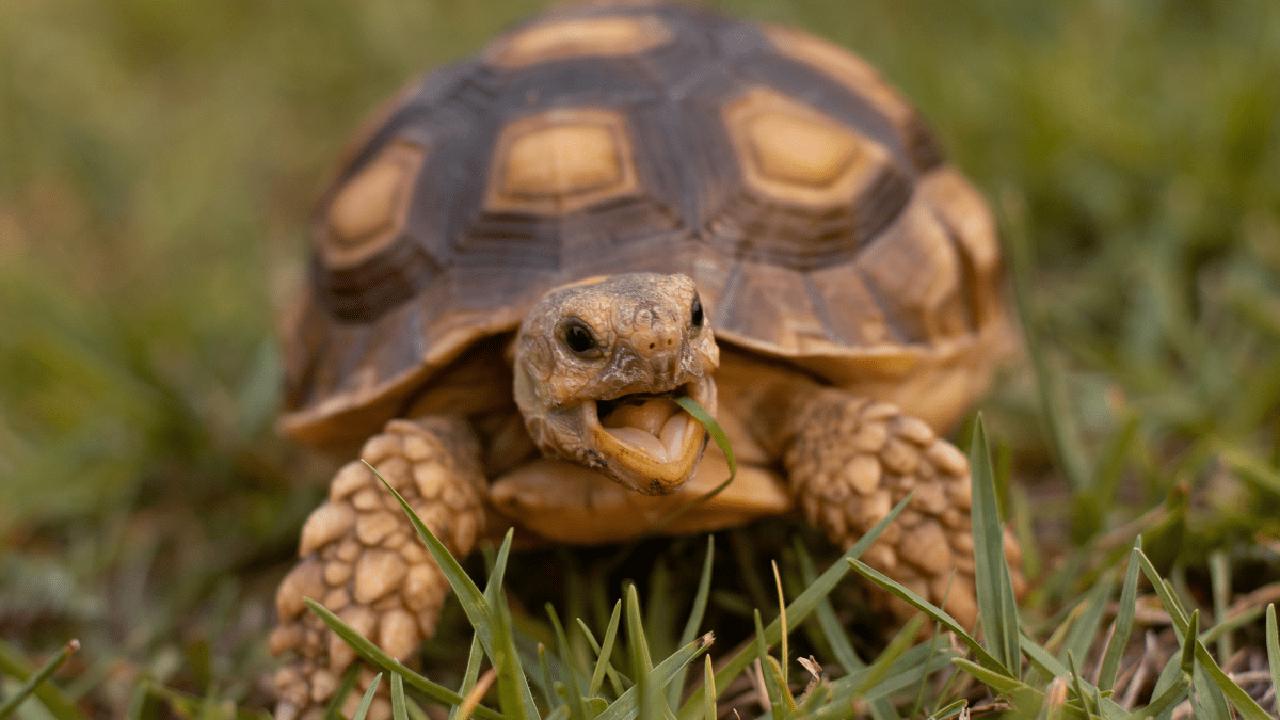
Tortoise Habitat
Tortoises are hardy and present in almost all different natural environments. You can find them all around the globe, except Australia and Antarctica. However, they live in semi-arid regions. Here are their habitats.
| Deserts | Arid grasslands | Tropical rainfed forests | Scrub |
| Forests | Mountains | Sea level grounds | xxx |
Stop the Tortoise Trying to Escape
Tortoises often try to escape from the enclosure. Therefore, you should need to adopt protective measures to avoid their escape.
Circular Enclosure
Tortoises often climb the wall through corners of regular enclosures. To avoid their escape, you can build a circular tortoise enclosure.
Thick the Substrate
In indoor enclosures, increase the thickness of the substrate to several inches. It will help your pet live on a stress-free surface because they love to dig the surface. The higher the comfort, the lesser the chance to escape from the enclosure.
Increase Enclosure Area
Provide the area according to tortoise size and activity. It’ll help to keep stress-free.
Hygienic Environment
Always provide them with hygienic conditions. Such conditions promote happiness and health, including light, water, food, cleanliness, etc.
Increase the Height of Enclosure Walls
Increase the height of the enclosure wall. It’ll prevent tortoises from escaping the enclosure.
Build a Solid Barrier
Hide the worldview from them because it can urge them to escape from the enclosure. Use solid, tough, and opaque material for the barrier construction, i.e., wooden fencing, breeze blocks, and concrete blocks.
Enhance the Enclosure Wall Deep
Tortoises love to dig the ground and burrow themselves. This ability also increases the chance of underground escape. Therefore, you need to increase the depth of the enclosure, i.e., at least 12 inches.
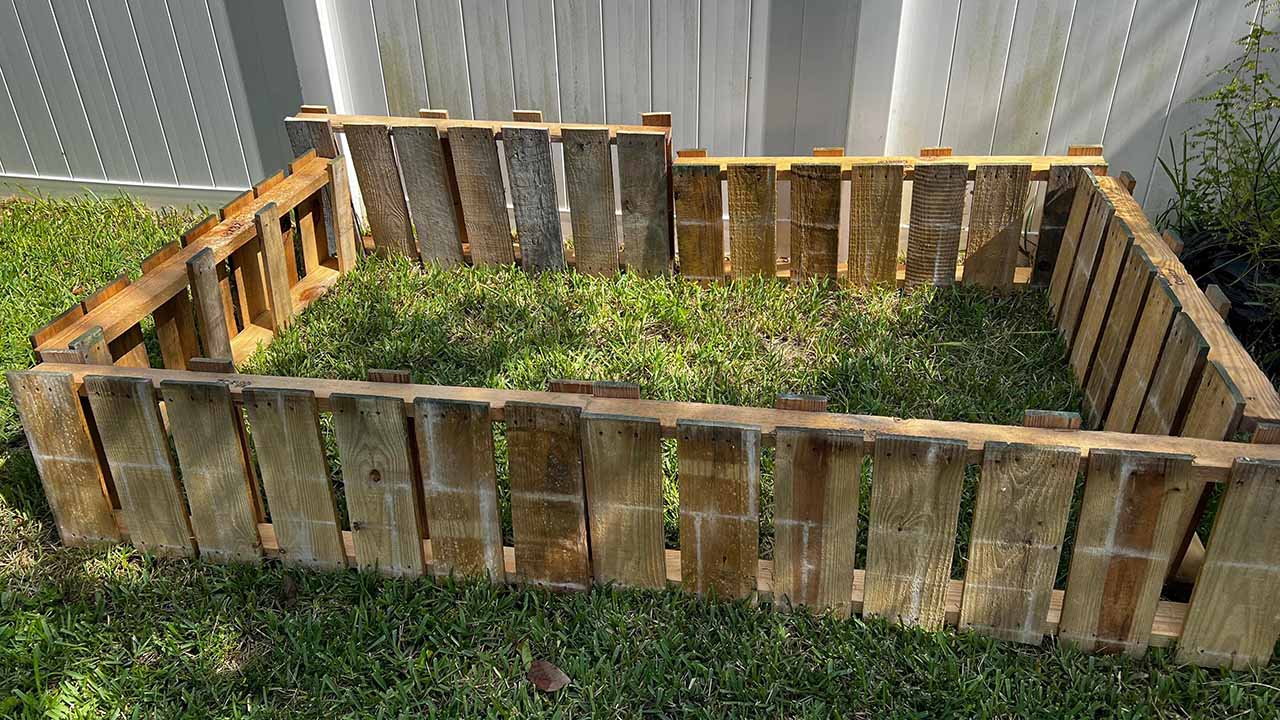
Indoor and Outdoor Enclosures for Tortoises
Indoor and outdoor enclosure for tortoises have their ups and downs. Before setting them up, one should know their difference and how to choose a suitable one for your pet.
Difference Between Both Enclosures
You can keep the tortoise in both indoor and outdoor conditions. Each setup has its limitations. Here is a comparison of the differences between them.
| Indoor Enclosure | Outdoor Enclosure |
| Ideal for cold regions | Ideal throughout the year except in the winter |
| Less space | More space |
| Require extra care | Require less care |
| Heavy investment requires terms of accessories | Requires less investment |
| Safe them from being stolen, foxes, and mice | Make your pet vulnerable to many issues, i.e., theft, mice, and foxes |
| Lesser or no chance of escape | Higher chance of tortoise escape |
How to Choose a Suitable Type of Enclosure?
The selection of a suitable type of enclosure depends on certain aspects. Some of them are listed below.
Environmental Conditions
If you live in a cold region, then you should go with an indoor tortoise enclosure. Otherwise, outdoors is better because it’s hard for tortoises to survive the extreme cold.
Space Selection
If you have enough outdoor space, i.e., a garden, you are good to go with an outdoor enclosure. However, you need an indoor one for the winter. If you don’t have a garden or outdoor space, then invest in an indoor setup.
Investment
In outdoor conditions, Mother Nature does many things by itself. Therefore, it requires less investment. On the other hand, if you are thinking of an indoor enclosure, then it requires heavy bucks.
Size and Type of Tortoise
The size and type of tortoise are also selection factors. An adult tortoise requires more space as they become big and explore the soundings. In such conditions, you need to set up an outdoor enclosure on a low budget. If you don’t have space, invest some big bucks for indoor setups.
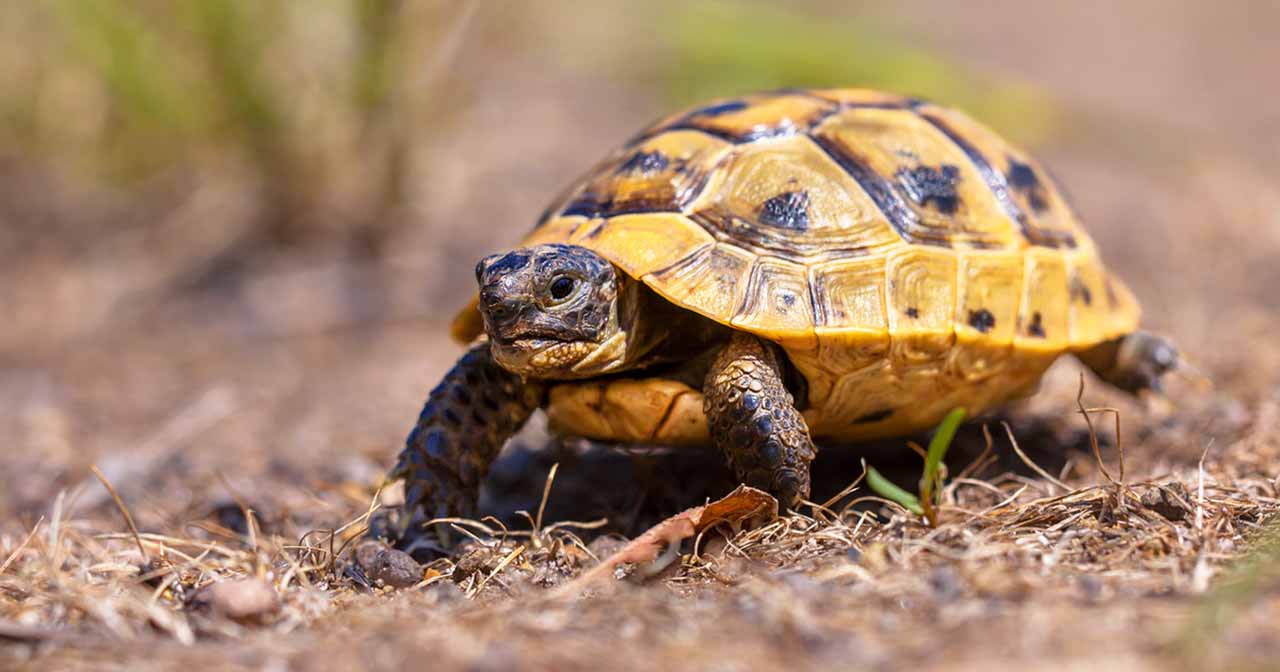
How to Build a Tortoise Enclosure?
You should remember several points while building a safe and secure indoor or outdoor tortoise enclosure.
How to Build an Indoor Enclosure?
If you have a small tortoise or some other climatic issues, then an indoor setup is suitable. Here is step by step guide to build an indoor tortoise enclosure.
Size and Space
In any indoor setup, space allocation is always a problem. It is usually less than the required. In general, 10X space of tortoise length is required. 60 to 160 gallons is optimal for small-size species. The larger species need at least 240-gallon space.
Moreover, the table should be wide enough to accommodate the entire commodities, i.e., hiding spots, basking spots, space for exploration, and feeding area.
Substrate
Substrate selection is the next challenge in setting up an indoor tortoise enclosure. It’s ideal if the substrate is according to the tortoise’s habitat. However, there are certain options are also available.
| Cypress mulch or orchid bark | Edible substrates (alfalfa, hay, rabbit pellets, etc.) | Newspaper |
| Organic, additive-free topsoil | Natural ground cover (native grasses, clovers, etc.) |
The substrate should be toxin-free because tortoises try to taste it. To make it toxin-free, you can sterilize the soil by heating it in the oven and boiling the rocks in the water. Its depth should be at least 5 inches because they love to dig the ground.
Temperature and Light Maintenance
Both of these aspects are crucial, as they directly affect health. You need to provide a smooth temperature gradient in the enclosure. It varies among species. Generally, it ranges from 35-38°C at the basking site to 24-29°C at shade.
You can achieve the high temperature through various ways, i.e., heat emitters and basking lamps. A thermostat is the best to regulate the temperature within limits. Heat should come from the top. It should be at least 30 cm above the tortoise.
They need proper UV light. It helps to metabolize their system for calcium. This calcium helps to harden the tortoise skull. UVB lamps are among the most suitable options.
Hiding Spots
In nature, the tortoise spends most of its life in hiding. They take rest under these spots. Therefore, introduce some hiding spots, shelters, or caves. These hiding spots also give them a feeling of security and comfort.
Enrichment
Enrichment is necessary in indoor tortoise enclosures as it helps to keep them busy and happy. It can be obstacle courses or foraging puzzles. Logs, round corner rocks, and other climbing decorations are also suitable for them.
Securing the Enclosure
Secure the enclosure because they tend to escape by climbing and digging under the wall. The enclosure wall should be high and circular. It will keep them inside of the enclosure. Moreover, use latches and locks to secure the escape points.
Food and Water
Usually, tortoises don’t need water for drinking. Some desert species can even spend their entire life without drinking water. They fetch it through food. However, place a water pot and re-fill it regularly. It shouldn’t be deep enough that drown them.
Provide food according to the requirement. Too much can cause obesity issues. They eat multiple types of food, including several leafy greens, fruits, and vegetables. Keep a rotation in food items to avoid similarity and boredom.
Precautions
- Keep the cords away from the enclosure’s wall.
- Don’t use plastic decorations as they try to nibble the items.
- Clean the substrate daily and change it within one month.
- Keep the furnishing objects at least tortoise width away from the wall.
- Don’t use heat pads or heat rocks.
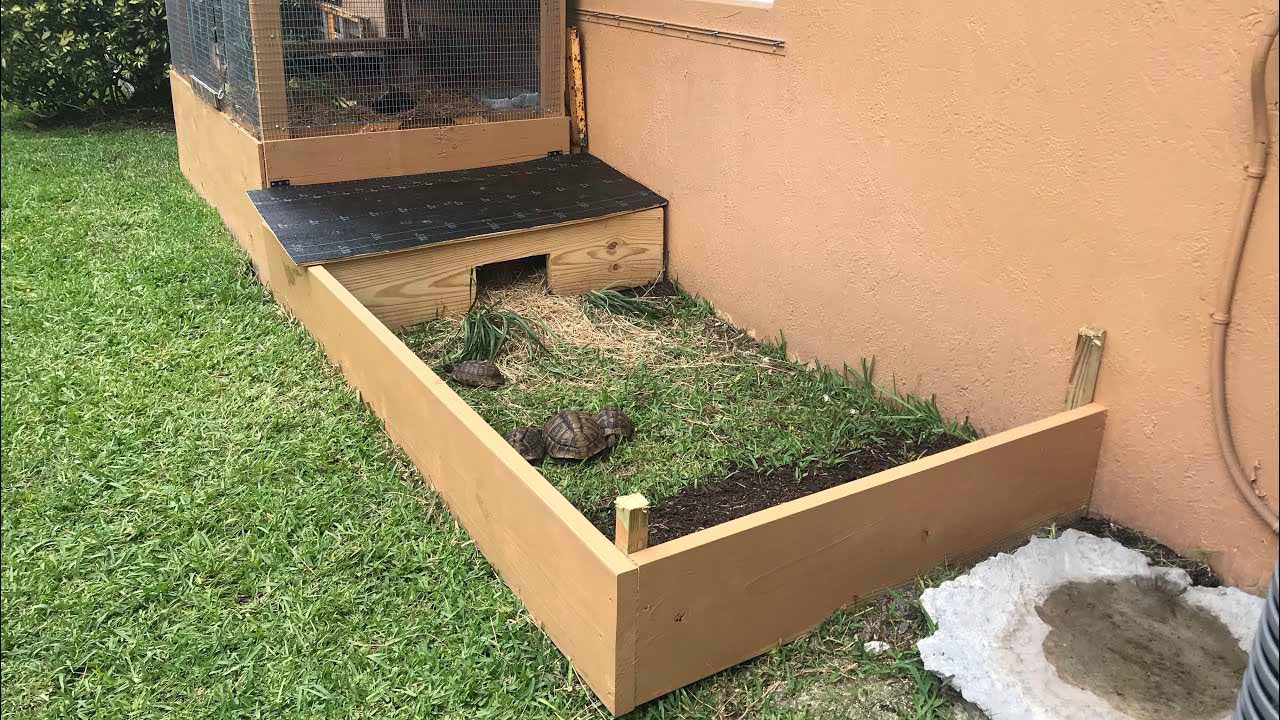
How to Build Outdoor Tortoise Enclosure?
If you want to keep a big pet tortoise and have a wide backyard, it will be a dream house for your tortoise. However, there are certain aspects that you need to keep in mind while setting up an outdoor tortoise enclosure.
Site Selection
A sloppy site with shaded and basking areas is ideal for keeping tortoise outdoors. The slope makes it well-drained in the rainy season. Moreover, it’ll also challenge your pet’s feet.
Fencing
Install tall and tough fencing around the selected site. There are several fencing materials. Wood, metal, bricks, and concrete are some of such materials. The fencing should be high enough to prevent climb escape, i.e., more than double the height of your tortoise. Moreover, the fencing should be at least 12 inches deep to prevent digging escape.
Shelter
Hiding spots help your pet to hide itself from harsh weather. Provide shelter in the enclosure. It can be a wooden hut, dog house, or purpose-built facility. There should be proper insulation and ventilation in the shelter.
Enrichment
You can enrich the environment with many objects, i.e., round-edged rocks, logs, plants, etc. These objects try to give them a feel of home. Keep on rotating these objects to avoid boredom.
Plantation
Plants are among the most suitable for tortoises because they serve as food, shelter, and hiding spots. There are plenty of plant options are there.
| Aloe | Jade plant | Tropical hibiscus | Geranium | Bermuda grass |
| Mulberry | Spineless prickly pear cactus | Kale | Edible fig | Yucca |
Don’t grow toxic plants in a tortoise enclosure.
Security
Outdoor tortoise enclosures are under threat in many ways. Predators and thieves are the most concerned ones. Use well-ventilated fencing at the top to avoid aerial attack. It also helps to keep other predators or naughty creatures away from your pets. Moreover, use locks and latches at the escape points to restrict your pet within the allocated area.
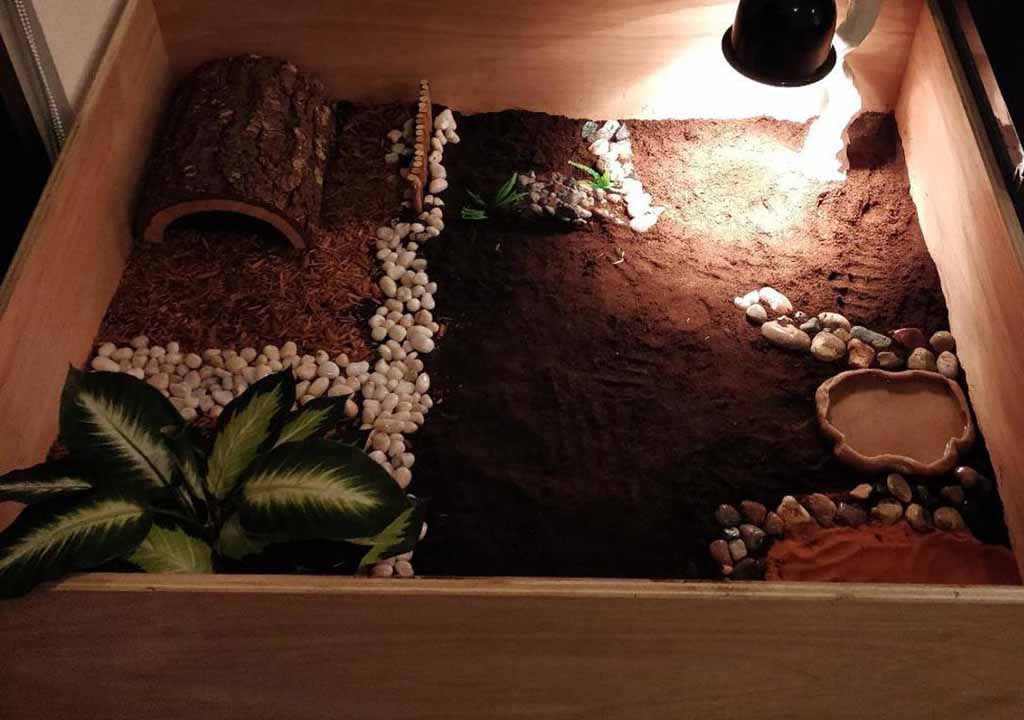
Key Takeaways
- Tortoises are present in all environments except Antarctica and Australia.
- They can climb the enclosure wall.
- You can avoid their escape with proper enclosure wall height, increasing the depth of side walls, and using opaque material.
- Indoor enclosures are suitable for winter and small species but require heavy bucks and maintenance.
- Outdoor enclosure is suitable except in winter but has a chance of theft and areal attack.
- During indoor setup, you must remember the size, construction material, lighting, heat, security, turtle filters, and many other aspects.
- Outdoor settings need site selection, fencing height, and depth, shelter, plantation, and security.
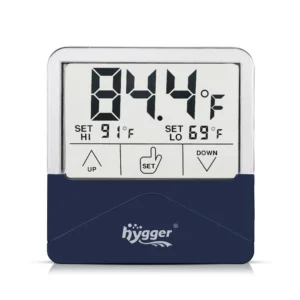
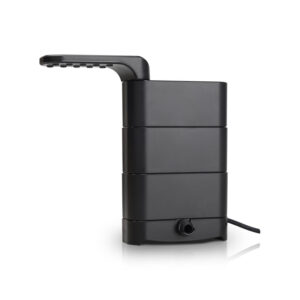
hi im johnny ocasio from new york city i have two sulcatta tortoises which are 26 inches big what size of enclosure you have for my tortoises if you enclosure please inform me ill buy it
Hi johnnyocasio,
Thank you for your support of hygger.
For the issue, hygger customer service will reach out to you and help you solve it.
We will be waiting for a reply from your mail.
Thanks
hygger team